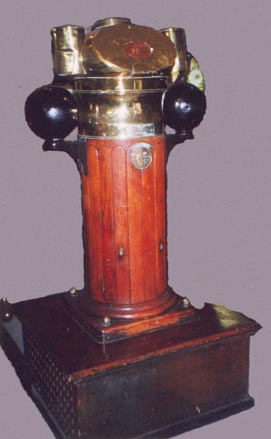

McGregor Compass Verifier



For obvious reasons iron ships created a lot of issues for compasses.
While preparing Cerberus to leave the UK for Victoria, Captain Panter discovered that the ship's compasses were incorrect by a massive 66 degrees (between north and east). The compasses were then repositioned on the ship on the 27th of October 1870. Their adjustment by a man from the Admiralty who put in magnets was completed the next day. Captain Panter related how, after leaving Suez, the compasses altered their deviation almosr causing Cerberus to run adrift twice. A clear sky allowed observations of the sun to be made thereby allowing navigation without the compasses until the cause was found, which unfortunately Panter did not explain.
| As to the compasses, a great deal more has been made of the defect in these instruments than perhaps is quite fair. The fact is they never deviated more than 179° 3' 45" 32"' which, taking-all things into consideration, must be considered very satisfactory, and calculated to reflect great credit both on their designers and those who had adjusted them. |
As we believe that the Compass Verifier, said to be from Cerberus, was not manufactured until 1876, it is not the means by which the compasses were adjusted on this occasion.
The McGregor Compass Verifier was claimed by its manufacturer to be "the latest & best invention for ascertaining the compass errors of iron vessels". This Verifier is an 1870s computer which can calculate true and magnetic north.
To calculate magnetic north, the latitude and magnetic declination (difference between true and magnetic north) of the current location, as well as whether the time of day is before or after noon, are entered into the Verifier. A further adjustment is then made by sighting the sun to compute magnetic north. The ship's compasses are then compared to magnetic north as indicated by the Verifier, and adjusted accordingly.
 |
 |
| Binnacle on Flying Deck On display in the Museum of HMAS Cerberus | Compass on Quarterdeck |
 Patent Advertisement Iron, 3 June 1876. |